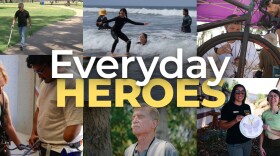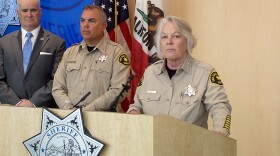Abdul Rahman Ibn Asadullah stood at the base of a towering wall in Mesa Rim Climbing Center, considering the different routes to the top.
The Mission Valley climbing gym’s walls are studded with colorful, rubbery “holds” that look like clumps of Play-Doh. Some offer generous handles to grab, others are ribbed and textured, and the most challenging ones provide only a tiny lip to clutch.
Rock climbing is essentially solving a vertical puzzle while hanging 30, 50 or 100-plus feet off the ground. It’s a daunting challenge on its own. But Ibn Asadullah faced an additional hurdle — he’d have to crack the puzzle with only one hand.
“My amputation happened last year,” he said. “I got into an off-roading accident in a side-by-side, a UTV … basically just flipped the UTV, landed on my arm.”
Ibn Asadullah was rushed to the hospital. His doctors saved his left elbow and part of his forearm, though his wrist and hand were damaged beyond repair. But that hasn’t stopped Ibn Asadullah from picking up adaptive versions of archery, basketball and volleyball.

Rock climbing, a sport that typically demands a strong set of hands, might be his most difficult undertaking so far. Fortunately, there’s a group of skilled climbers — many with disabilities themselves — providing him support, guidance and community along the way.
ParaCliffHangers is a national nonprofit that connects experienced volunteer climbers with newcomers to the sport of adaptive climbing. The San Diego chapter launched about a year ago at the Mesa Rim Climbing Center and meets every Wednesday night.
“We have people that are deaf, people that are paraplegic, people that are missing limbs — legs, arms — people that are blind,” said Jillian Shea, a volunteer with ParaCliffHangers. “All disabilities are welcome.”
Shea was born without a left hand. She’s been climbing for more than three years and started volunteering with ParaCliffHangers to help others fall in love with the sport.
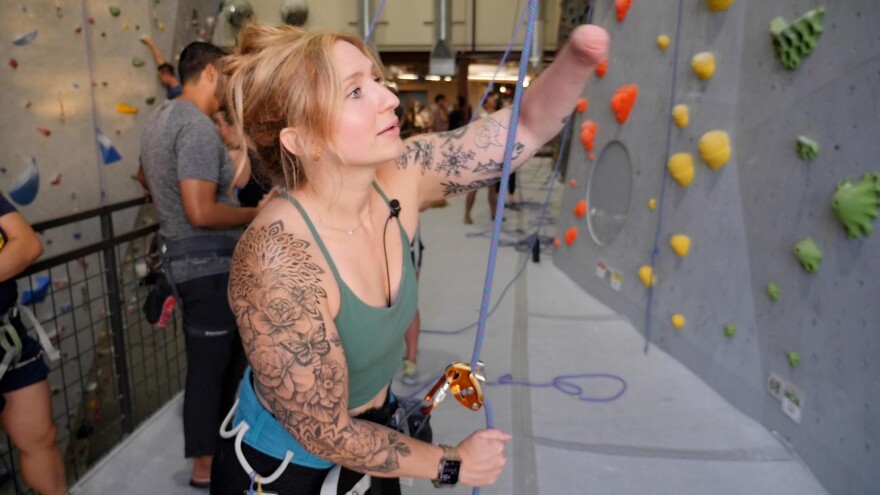
“ParaCliffHangers is a place for everybody and anybody that’s adaptive to feel comfortable in a space and be able to try something new,” she said.
Shea and Ibn Asadullah paired up on a recent Wednesday night meet-up. It was his second time climbing since he lost his hand in the accident.
“When I walked in here, my first thoughts were definitely like, ‘I don't belong here,’” Ibn Asadullah said with a laugh. “I see everybody climbing and stuff and they're all super slim and fit and scaling these walls.”
But after meeting the folks behind ParaCliffHangers, he added, “that quickly faded.”
Shea taught Ibn Asadullah about the ropes, knots, carabiners and harnesses used to safely ascend the wall. She also provided guidance on how he could use his amputated arm to hook onto certain holds and the importance of using his legs while climbing to minimize fatigue.
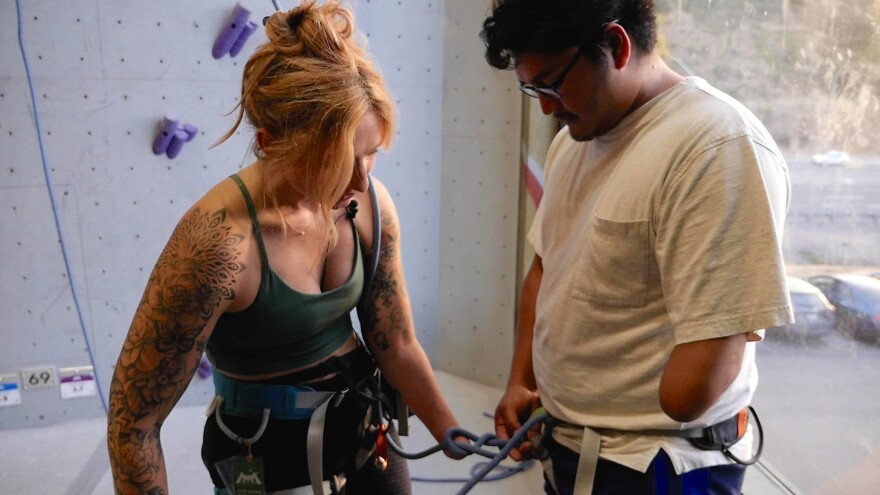
Ibn Asadullah said it’s invaluable to learn from someone who personally understands the hurdles he faces.
“They do know, they have gone through this, and they're trying to explain to you what worked for them,” he said. “It helps me feel like, ‘hey, you know, I can trust this person.’”
Jono Lewis, who started the San Diego ParaCliffHangers chapter, said that’s one of the main goals of the program.
“Having volunteers that have disabilities themselves is a really important thing,” said Lewis, who serves as the adaptive program supervisor at Mesa Rim. “Because representation is a big part of what draws people in and why people want to come back.”

And as an experienced adaptive climber himself, Lewis understands how the skills developed through rock climbing often transcend the sport.
“What I see from a lot of climbers is a boost not just in their physical performance, but in their confidence off of the wall,” he said. “People's ability to feel comfortable trying new things and problem-solving outside of climbing is increased.”
Over time, the volunteer and participant roles start to blend. As newcomers gain more experience, they offer advice and tips to others who join. Many participants also learn to “belay” — the role of handling the rope from the ground and catching a climber if they fall.
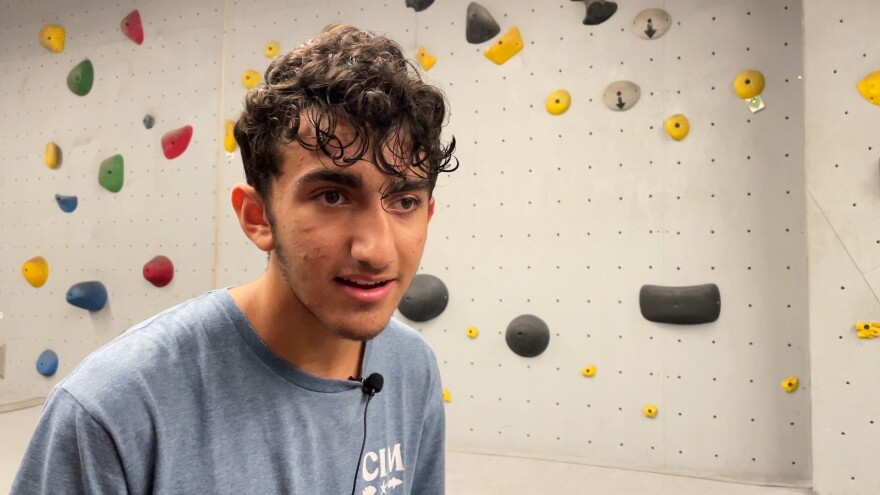
Brian Ibrahim, an adaptive climber who is visually impaired, recalled being terrified when he first tried climbing at Mesa Rim.
After about nine months with ParaCliffHangers, “I can conquer anything that is put in front of me,” he said.
On a recent Wednesday night, Ibrahim scaled one of the tallest walls in the gym. Volunteers on the ground called out coordinates for his next move — “left hand at 11 o’clock,” “you have another hold at 12:30” — as his hands and feet scanned the wall.
Later, Ibrahim belayed one of the volunteers when they took a turn on the wall.
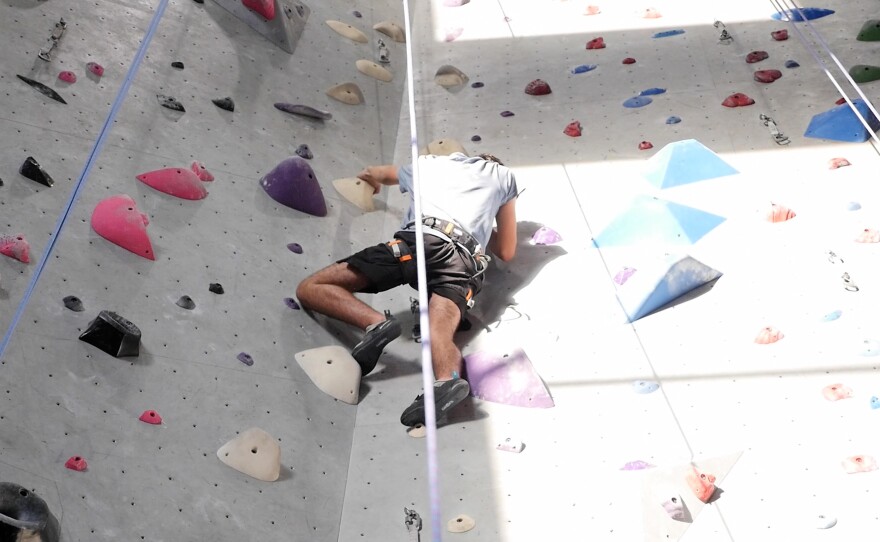
He offered words of encouragement to anyone who wants to try rock climbing.
“Take what you have and push that to the limits,” he said. “And those limits won’t matter anymore.”

